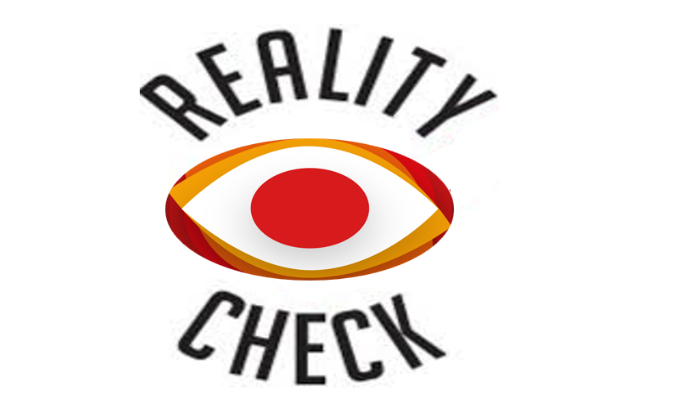
“Managing Additional Responsibilities Successfully” (MARS) is relevant to all levels of managers in corporations and large institutions. In the context of promotion or role expansion: (a) Vice President to CEO (b) A Country Head to a Regional Head (c) A CFO given charge of a Purchase function (d) A General Manager, Production, asked to take over R&D or a Delivery Head asked to take over Vendor Management (e) Or a Relationship Manager asked to take on Delivery. In any position, it is most often considered a creditable achievement for the receiver. Many take up the new role and related responsibilities with a sense of pride. They generally try to add value to the additional responsibilities. This is rightly so and commendable due to the risk of change involved.
We see many adjust to new roles by making formal and informal changes as they go along. However, seldom do we see anyone, managers, and CEOs included, take a comprehensive overview of the landscape before they start to engage. This planned holistic perspective when taking on a new role is most often overlooked.
Some who take up new roles get ‘up to speed’ after burning their fingers, others stumble along not knowing what’s hitting them and quite a few operate below their full potential. Those that succeed are made out to be role models, though the true reasons attributed to their success are not recognized and are often interpreted incorrectly.
The MARS factors are meant to act as a “thought trigger’ for managers to facilitate a reality check on themselves and their ‘high potentials’ – just to ensure they have covered all the bases. Most MARS factors are known to many but seldom do all come to mind at the same time. Thus, we very rarely see a systematic approach to taking on additional responsibilities. The underlying assumption in the MARS report is that most possess the appropriate level of capability. However, a personal capability self-assessment would be an added advantage. Nobody is perfect, but all are trying to get there.
The MARS Factor in Corporates – Cases
To clarify the application of MARS factors we give simple illustrative examples in the case studies below:
Case A: A ‘Relationship Manager’ is asked to take over two technology Centers of Excellence (COE) – COEs are shared high-tech R&D centers that provide innovative solutions for customer problems.
The Relationship Manager (RM), Anita, considers her additional responsibility well deserved and a stepping stone to her next promotion. She feels that she can take her current portfolio of accounts to a higher level of business. The common assumption was that (a) she was in full control of her current responsibilities (b) she had time to spare for taking on new responsibilities (c) she has a second level of hierarchy who can take on additional responsibilities with less guidance, thus freeing herself for additional work (d) she will be able to delegate tasks to spare time for her new additional responsibilities (e) she has a well-functioning secretariat (governance office staff) that can accommodate additional tasks demanded by the expanded role.
Anita soon gets into her new role with much enthusiasm and vigor. She starts focusing on solutions for her existing customers. She gets good results and some increased revenue here. However, problems start brewing. She finds other RMs demanding more attention from the COEs, and resource allocation issues were being escalated to her. In addition, she found that her sales team began to get slack due to a lack of follow-up and guidance. The order pipeline was going down, the prospecting activity was reduced, and the new business closing ratio had declined. She began to struggle to keep her head above water, but she managed to meet the numbers by extending herself and putting in more effort. Anita moved from a high-performing and reputed manager to a borderline case.
In this case, Anita ignored 3 main MARS factors besides others. They were: (a) reconfiguring her organizational structure, (b) developing her circle of engagement and (c) practicing helicopter viewing. By taking the full burden of additional responsibilities she spread herself too thin.
Case B: A ‘General Manager – Manufacturing’ (GM-M) is asked to take over three support departments (Maintenance, Industrial Engineering, and Production Planning & Scheduling)
The GM-M, Akash, was highly motivated when he was given this new responsibility. He had always felt that these departments had been instrumental in constraining his performance. He had overseen production for over a decade and felt he knew all about the support departments. His perception was (a) the functioning of support departments was straightforward forward (b) dealing with a qualified team was the same as dealing with workers (c) the grey area management in support was the same as in production (d) the elapsed time for the impact of decisions made was the same for both production and support departments (e) the performance measurement parameters for support departments were more or less the same as for production.
Akash got into his new role and began directing new departments to resolve immediate problems that were impacting production schedules. They all complied and for the first few months, all went well. However, after three months some issues began to crop up and things began to slowly fall apart. While breakdown maintenance did well, scheduled and planned maintenance suffered. Spare stocks went down, and budgets went out of control. Planning & Scheduling began to come under strain as buffer stocks came down. Machine set-up times increased due to frequent product changes in the production lines. Akash got stressed and began to micromanage. His experience came in handy and with some workarounds like overtime, additional shifts, and cannibalization of machine parts, he managed to survive. Akash moved from a high-performing and reputable manager to an average manager just managing to survive.
In this case, Akash ignored 4 main MARS factors besides others. They were: (a) selecting a range of advisors, (b) reconfiguring his organization structure, (c) developing his circle of engagement, and (d) practicing helicopter viewing. By taking the full burden of additional responsibilities and micromanaging he spread himself too thin.
Case Summary: The above cases highlight illustrative problems faced by managers taking on additional responsibilities. While the number and variety of cases across industry sectors could be many, most issues could boil down to some MARS factors being ignored. Many in higher positions ignore the need for a well-staffed secretariat to be put in place to enable a governance check on the wide spectrum of departments under their control. Often, we see that an organization’s structure, systems, and policies have not been tweaked to meet the changing needs. Application of the MARS factors will help to highlight “Blind Spots” here too.
General Overview Questions: (1) How -Why -What caused the situations to get out of control? (2) How did a good reputation turn sour? (3) Is this a common phenomenon? (4) Do such managers need help and why is the help not forthcoming? (5) How can this problem be resolved?
The MARS Factor
When taking over additional responsibilities, every entity should take a holistic review of the environment in which they are expected to perform. The MARS factors in the context of a manager (Executives to CEOs) are given below:
Each MARS factor can be elaborated on and supported by numerous examples. These “Thought Triggers” are for the well-experienced who just require a hint to take things forward and excel in their new roles. Brief details of each factor are shared below.
Alan Doulton
Brief Description of the MARS Factors
- When taking on additional responsibilities, managers need to review their new portfolios completely, as well as allocate time and define frequencies for managing each entity, depending on priorities.
- This means that the manager would have to review all entities he plans to be in contact with to meet his role goals. The 360-degree circle entities would include bosses, subordinates, and peers as well as external entities (customers, vendors, regulators, government officials, etc.) who need to be managed for optimum results. These should be prioritized (meaningful for role goals) in 3 levels. The top 20 persons, the next 30, and the balance 50-80. In all 100-130 would be his direct ‘Circle of Engagement’ connects. He then needs to assess his current relationship with them and plan actions for rectification or upgrade where necessary. These connected relationships are dynamic and at any time 10% keep changing. He must plan to manage this.
- This means that the higher your helicopter flies the more powerful should be your binoculars. Every role requires a feedback network mechanism. Having people in different positions to provide feedback to help in the timely appreciation of ground realities is important. This network also needs to be periodically reviewed. Often, we see voids in feedback channels and feedback quality turning sour. Often people start providing managers with preferred feedback that could be far from the truth or a twisted version of the truth. Managers need to have a counter-checking mechanism for this.
- In any position, but more so in higher roles, one requires 3 types of advisors. Academicians (theoretical), Consultants (Knowledgeable but not fully experienced), and Mentors (Those who have held similar positions and roles). These experts must be selected according to their professional knowledge, contextual experience, and relationship with the manager. Their value addition and usability need to be constantly assessed and changes may be made as necessary. The reasons for change could be outdated knowledge level, context-fit mismatch, and non-acceptability to the manager’s inner circle. At lower levels, HR may provide role transition advisory services but at higher levels, an external mentor would be preferable.
- In any role, there is a need to network with others to acquire knowledge of environmental and situational trends. The norm is to have a fixed group across geographies and roles. Networking needs to be focused (not a meet-and-greet engagement which is the normal style) for information acquisition. Network entity reshuffling (10%) is required to ensure the depth and spread of knowledge acquisition is optimum.
- As a person grows into higher positions his need for personal reflection increases. At lower levels, it could be 1-2 hours per week, which could rise to 3-4 hours. Depending on the level this is done in 2-3 slots. During this period, the manager reflects on his performance or takes up some select areas for review. Some questions he could ask himself are: What can I do better or differently? What am I missing? How can I delegate to get more free time for high-priority tasks? And so on.
- As a person grows into leading positions the normal single long vacation a year may not be the right approach for rejuvenation (shutting down to refresh). The recommended approach is to have 3-4 short vacations in a select and different stress-free environment. These need not be taken at fixed intervals but can be need-based. However, never delay vacations for too long. People tend to overestimate their own personal, physical, and mental capacities. This includes the ability to manage stress.


